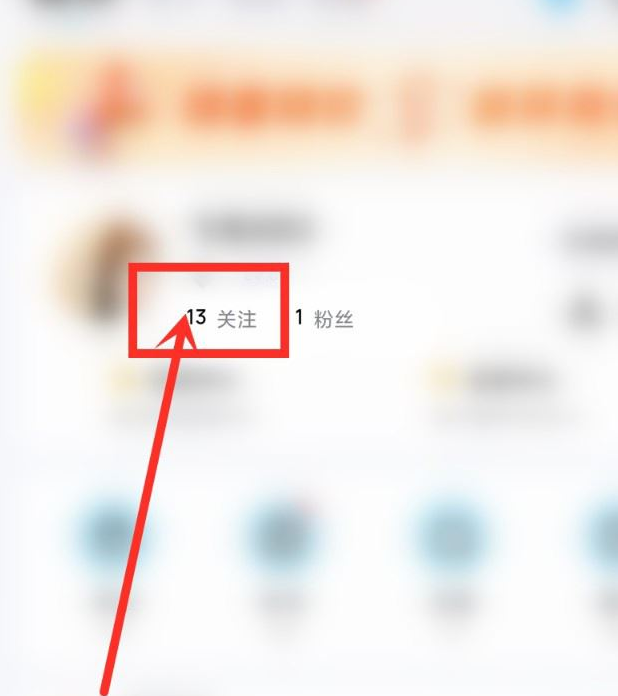如何阅读源码
网上有很多关于源码阅读的文章,每个人都有自己的方式,但是网上的文章都是精炼之后的,告诉你哪个文件、那个函数、那个变量是干什么的;【相关推荐:vuejs视频教程、web前端开发】
但是没有告诉你这些是怎么找到的,这些是怎么理解的,这些是怎么验证的,这些是怎么记忆的,这些是怎么应用的。
 (相关资料图)
(相关资料图)
我也不是什么大神,也是在摸索的过程中,逐渐找到了自己的方式,我这里就分享一下我的方式,希望能帮助到大家。
怎么找到起点
万事开头难,找到起点是最难的,对于前端项目,我们想要找到入口文件,一般都是从package.json中的main字段开始找;
package.json中的main字段代表的是这个包的入口文件,通常我们可以通过这个字段的值来找到我们要阅读的起点。
但是对于Vue来说,这个字段是dist/vue.runtime.common.js,这个文件是编译后的文件,我们是看不懂的,所以需要找到源码的入口文件;
这个时候我们就需要看package.json中的scripts字段:
{"scripts": { "dev": "rollup -w -c scripts/config.js --environment TARGET:full-dev", "dev:cjs": "rollup -w -c scripts/config.js --environment TARGET:runtime-cjs-dev", "dev:esm": "rollup -w -c scripts/config.js --environment TARGET:runtime-esm", "dev:ssr": "rollup -w -c scripts/config.js --environment TARGET:server-renderer", "dev:compiler": "rollup -w -c scripts/config.js --environment TARGET:compiler ", "build": "node scripts/build.js", "build:ssr": "npm run build -- runtime-cjs,server-renderer", "build:types": "rimraf temp && tsc --declaration --emitDeclarationOnly --outDir temp && api-extractor run && api-extractor run -c packages/compiler-sfc/api-extractor.json", "test": "npm run ts-check && npm run test:types && npm run test:unit && npm run test:e2e && npm run test:ssr && npm run test:sfc", "test:unit": "vitest run test/unit", "test:ssr": "npm run build:ssr && vitest run server-renderer", "test:sfc": "vitest run compiler-sfc", "test:e2e": "npm run build -- full-prod,server-renderer-basic && vitest run test/e2e", "test:transition": "karma start test/transition/karma.conf.js", "test:types": "npm run build:types && tsc -p ./types/tsconfig.json", "format": "prettier --write --parser typescript "(src|test|packages|types)/**/*.ts"", "ts-check": "tsc -p tsconfig.json --noEmit", "ts-check:test": "tsc -p test/tsconfig.json --noEmit", "bench:ssr": "npm run build:ssr && node benchmarks/ssr/renderToString.js && node benchmarks/ssr/renderToStream.js", "release": "node scripts/release.js", "changelog": "conventional-changelog -p angular -i CHANGELOG.md -s" } }登录后复制可以看到Vue的package.json中有很多的scripts,这些相信大家都可以看得懂,这里我们只关注dev和build这两个脚本;
dev脚本是用来开发的,build脚本是用来打包的,我们可以看到dev脚本中有一个TARGET的环境变量,这个环境变量的值是full-dev,我们可以在scripts/config.js中找到这个值;
直接在scripts/config.js中搜索full-dev:
这样就可以找到这个值对应的配置:
var config = { "full-dev": { entry: resolve("web/entry-runtime-with-compiler.ts"), dest: resolve("dist/vue.js"), format: "umd", env: "development", alias: { he: "./entity-decoder" }, banner }}登录后复制entry字段就是我们要找的入口文件,这个文件就是Vue的源码入口文件,后面的值是web/entry-runtime-with-compiler.ts,我们可以在web目录下找到这个文件;
但是并没有在根目录下找到web目录,这个时候我们就大胆猜测,是不是有别名配置,这个时候我也正好在scripts下看到了一个alias.js文件,打开这个文件,发现里面有一个web的别名;
代码如下:
module.exports = { vue: resolve("src/platforms/web/entry-runtime-with-compiler"), compiler: resolve("src/compiler"), core: resolve("src/core"), web: resolve("src/platforms/web"), weex: resolve("src/platforms/weex"), shared: resolve("src/shared")}登录后复制为了验证我们的猜测,我们可以在config.js中搜一下alias,发现确实有引入这个文件:
const aliases = require("./alias")const resolve = p => { const base = p.split("/")[0] if (aliases[base]) { return path.resolve(aliases[base], p.slice(base.length + 1)) } else { return path.resolve(__dirname, "../", p) }}登录后复制再搜一下aliases,发现确实有配置别名:
// 省略部分代码const config = { plugins: [ alias({ entries: Object.assign({}, aliases, opts.alias) }), ].concat(opts.plugins || []),}登录后复制这样我们就可以确认,web就是src/platforms/web这个目录,我们可以在这个目录下找到entry-runtime-with-compiler.ts这个文件;
这样我们就成功的找到了Vue的源码入口文件,接下来我们就可以开始阅读源码了;
如何阅读源码
上面找到了入口文件,但是还是不知道如何阅读源码,这个时候我们就需要一些技巧了,这里我就分享一下我自己的阅读源码的技巧;
像我们现在看的源码几乎都是使用esm模块化或者commonjs模块化的,这些都会有一个export或者module.exports,我们可以通过这个来看导出了什么;
只看导出的内容,其他的暂时不用管,直接找到最终导出的内容,例如Vue的源码:
entry-runtime-with-compiler.ts的导出内容:
import Vue from "./runtime-with-compiler"export default Vue
登录后复制这个时候就去找runtime-with-compiler.ts的导出内容:
runtime-with-compiler.ts的导出内容:
import Vue from "./runtime/index"export default Vue as GlobalAPI
登录后复制这个时候就去找runtime/index.ts的导出内容:
runtime/index.ts的导出内容:
import Vue from "core/index"export default Vue
登录后复制这个时候就去找core/index.ts的导出内容:
core/index.ts的导出内容:
import Vue from "./instance/index"export default Vue
登录后复制这个时候就去找instance/index.ts的导出内容:
instance/index.ts的导出内容:
function Vue(options) { if (__DEV__ && !(this instanceof Vue)) { warn("Vue is a constructor and should be called with the `new` keyword") } this._init(options)}export default Vue as unknown as GlobalAPI登录后复制这样我们就找到Vue的构造函数了,这个时候我们就可以开始阅读源码了;
带有目的的阅读源码
阅读源码的目的一定要清晰,当然你可以说目的就是了解Vue的实现原理,但是这个目的太宽泛了,我们可以把目的细化一下,例如:
Vue的生命周期是怎么实现的
Vue的数据响应式是怎么实现的
Vue的模板编译是怎么实现的
Vue的组件化是怎么实现的
Vue的插槽是怎么实现的
等等...
例如我们的这次阅读计划就是了解Vue的this为什么可以访问到选项中的各种属性,这里再细分为:
Vue的this是怎么访问到data的
Vue的this是怎么访问到methods的
Vue的this是怎么访问到computed的
Vue的this是怎么访问到props的
上面顺序不分先后,但是答案一定是在源码中。
源码分析
上面已经找到了Vue的入口文件,接下来我们就可以开始阅读源码了,这里我就以Vue的this为什么可以访问到选项中的各种属性为例,来分析Vue的源码;
首先看一下instance/index.ts的源码:
import { initMixin } from "./init"import { stateMixin } from "./state"import { renderMixin } from "./render"import { eventsMixin } from "./events"import { lifecycleMixin } from "./lifecycle"import { warn } from "../util/index"import type { GlobalAPI } from "types/global-api"function Vue(options) { if (__DEV__ && !(this instanceof Vue)) { warn("Vue is a constructor and should be called with the `new` keyword") } this._init(options)}//@ts-expect-error Vue has function typeinitMixin(Vue)//@ts-expect-error Vue has function typestateMixin(Vue)//@ts-expect-error Vue has function typeeventsMixin(Vue)//@ts-expect-error Vue has function typelifecycleMixin(Vue)//@ts-expect-error Vue has function typerenderMixin(Vue)export default Vue as unknown as GlobalAPI登录后复制有这么多东西,我们不用管,要清晰目的,我们在使用Vue的时候,通常是下面这样的:
const vm = new Vue({ data() { return { msg: "hello world" } }, methods: { say() { console.log(this.msg) } }});vm.say();登录后复制也就是Vue的构造函数接收一个选项对象,这个选项对象中有data和methods;
我们要知道Vue的this为什么可以访问到data和methods,那么我们就要找到Vue的构造函数中是怎么把data和methods挂载到this上的;
很明显构造函数只做了一件事,就是调用了this._init(options):
this._init(options)
登录后复制那么我们就去找_init方法,这个方法在哪我们不知道,但是继续分析源码,我们可以看到下面会执行很多xxxMixin的函数,并且Vue作为参数传入:
//@ts-expect-error Vue has function typeinitMixin(Vue)//@ts-expect-error Vue has function typestateMixin(Vue)//@ts-expect-error Vue has function typeeventsMixin(Vue)//@ts-expect-error Vue has function typelifecycleMixin(Vue)//@ts-expect-error Vue has function typerenderMixin(Vue)
登录后复制盲猜一波,见名知意:
initMixin:初始化混入
stateMixin:状态混入
eventsMixin:事件混入
lifecycleMixin:生命周期混入
renderMixin:渲染混入
我们就去找这些混入的方法,一个一个的找,找到initMixin,直接就找了_init方法:
export function initMixin(Vue: typeof Component) { Vue.prototype._init = function (options?: Record) { const vm: Component = this // a uid vm._uid = uid++ let startTag, endTag /* istanbul ignore if */ if (__DEV__ && config.performance && mark) { startTag = `vue-perf-start:${vm._uid}` endTag = `vue-perf-end:${vm._uid}` mark(startTag) } // a flag to mark this as a Vue instance without having to do instanceof // check vm._isVue = true // avoid instances from being observed vm.__v_skip = true // effect scope vm._scope = new EffectScope(true /* detached */) vm._scope._vm = true // merge options if (options && options._isComponent) { // optimize internal component instantiation // since dynamic options merging is pretty slow, and none of the // internal component options needs special treatment. initInternalComponent(vm, options as any) } else { vm.$options = mergeOptions( resolveConstructorOptions(vm.constructor as any), options || {}, vm ) } /* istanbul ignore else */ if (__DEV__) { initProxy(vm) } else { vm._renderProxy = vm } // expose real self vm._self = vm initLifecycle(vm) initEvents(vm) initRender(vm) callHook(vm, "beforeCreate", undefined, false /* setContext */) initInjections(vm) // resolve injections before data/props initState(vm) initProvide(vm) // resolve provide after data/props callHook(vm, "created") /* istanbul ignore if */ if (__DEV__ && config.performance && mark) { vm._name = formatComponentName(vm, false) mark(endTag) measure(`vue ${vm._name} init`, startTag, endTag) } if (vm.$options.el) { vm.$mount(vm.$options.el) } }} 登录后复制代码这么多没必要全都看,记住我们的目的是找到data和methods是怎么挂载到this上的;
先简化代码,不看没有意义的代码:
export function initMixin(Vue) { Vue.prototype._init = function (options) { const vm = this }}登录后复制传递过来的Vue并没有做太多事情,只是把_init方法挂载到了Vue.prototype上;
在_init方法中,vm被赋值为this,这里的this就是Vue的实例,也就是我们的vm;
继续往下看,我们有目的的看代码,只需要看有vm和options组合出现的代码,于是就看到了:
if (options && options._isComponent) { initInternalComponent(vm, options)} else { vm.$options = mergeOptions( resolveConstructorOptions(vm.constructor), options || {}, vm )}登录后复制_isComponent前面带有_,说明是私有属性,我们通过new Vue创建的实例时走到现在是没有这个属性的,所以走到else分支;
resolveConstructorOptions(vm.constructor)中没有传递options,所以不看这个方法,直接看mergeOptions:
export function mergeOptions(parent, child, vm) { if (__DEV__) { checkComponents(child) } if (isFunction(child)) { // @ts-expect-error child = child.options } normalizeProps(child, vm) normalizeInject(child, vm) normalizeDirectives(child) // Apply extends and mixins on the child options, // but only if it is a raw options object that isn"t // the result of another mergeOptions call. // Only merged options has the _base property. if (!child._base) { if (child.extends) { parent = mergeOptions(parent, child.extends, vm) } if (child.mixins) { for (let i = 0, l = child.mixins.length; i < l; i++) { parent = mergeOptions(parent, child.mixins[i], vm) } } } const options = {} let key for (key in parent) { mergeField(key) } for (key in child) { if (!hasOwn(parent, key)) { mergeField(key) } } function mergeField(key) { const strat = strats[key] || defaultStrat options[key] = strat(parent[key], child[key], vm, key) } return options}登录后复制记住我们的目的,只需要关心vm和options组合出现的代码,child就是options,vm就是vm,简化之后:
export function mergeOptions(parent, child, vm) { normalizeProps(child, vm) normalizeInject(child, vm) normalizeDirectives(child) return options}登录后复制可以看到只剩下了normalizeProps、normalizeInject、normalizeDirectives这三个方法,值得我们关注,但是见名知意,这三个方法可能并不是我们想要的,跟进去看一眼也确实不是;
虽然没有得到我们想要的,但是从这里我们也得到了一个重要信息,mergeOptions最后会返回一个options对象,这个对象就是我们的options,最后被vm.$options接收;
vm.$options = mergeOptions( resolveConstructorOptions(vm.constructor), options || {}, vm )登录后复制现在我们分析要多一步了,参数只有vm的函数也是需要引起我们的注意的,继续往下看:
if (__DEV__) { initProxy(vm)} else { vm._renderProxy = vm}登录后复制操作了vm,但是内部没有操作$options,跳过,继续往下看:
initLifecycle(vm)initEvents(vm)initRender(vm)callHook(vm, "beforeCreate", undefined, false /* setContext */)initInjections(vm) // resolve injections before data/propsinitState(vm)initProvide(vm) // resolve provide after data/propscallHook(vm, "created")
登录后复制initLifecycle、initEvents、initRender、initInjections、initState、initProvide这些方法都是操作vm的;
盲猜一波:
initLifecycle:初始化生命周期initEvents:初始化事件initRender:初始化渲染initInjections:初始化注入initState:初始化状态initProvide:初始化依赖注入callHook:调用钩子这里面最有可能是我们想要的是initState,跟进去看一下:
export function initState(vm) { const opts = vm.$options if (opts.props) initProps(vm, opts.props) // Composition API initSetup(vm) if (opts.methods) initMethods(vm, opts.methods) if (opts.data) { initData(vm) } else { const ob = observe((vm._data = {})) ob && ob.vmCount++ } if (opts.computed) initComputed(vm, opts.computed) if (opts.watch && opts.watch !== nativeWatch) { initWatch(vm, opts.watch) }}登录后复制已经找到我们想要的了,现在开始正式分析initState。
initState
根据代码结构可以看到,initState主要做了以下几件事:
props初始化setup初始化methods初始化data初始化computed初始化watch我们可以用this来访问的属性是props、methods、data、computed;
看到这里也明白了,为什么在props中定义了一个属性,在data、methods、computed中就不能再定义了,因为props是最先初始化的,后面的也是同理。
initProps
initProps的作用是初始化props,跟进去看一下:
function initProps(vm, propsOptions) { const propsData = vm.$options.propsData || {} const props = (vm._props = shallowReactive({})) // cache prop keys so that future props updates can iterate using Array // instead of dynamic object key enumeration. const keys = (vm.$options._propKeys = []) const isRoot = !vm.$parent // root instance props should be converted if (!isRoot) { toggleObserving(false) } for (const key in propsOptions) { keys.push(key) const value = validateProp(key, propsOptions, propsData, vm) /* istanbul ignore else */ if (__DEV__) { const hyphenatedKey = hyphenate(key) if ( isReservedAttribute(hyphenatedKey) || config.isReservedAttr(hyphenatedKey) ) { warn( `"${hyphenatedKey}" is a reserved attribute and cannot be used as component prop.`, vm ) } defineReactive(props, key, value, () => { if (!isRoot && !isUpdatingChildComponent) { warn( `Avoid mutating a prop directly since the value will be ` + `overwritten whenever the parent component re-renders. ` + `Instead, use a data or computed property based on the prop"s ` + `value. Prop being mutated: "${key}"`, vm ) } }) } else { defineReactive(props, key, value) } // static props are already proxied on the component"s prototype // during Vue.extend(). We only need to proxy props defined at // instantiation here. if (!(key in vm)) { proxy(vm, `_props`, key) } } toggleObserving(true)}登录后复制代码很多,我们依然不用关心其他的代码,只关心props是怎么挂载到vm上的,根据我上面的方法,简化后的代码如下:
function initProps(vm, propsOptions) { vm._props = shallowReactive({}) for (const key in propsOptions) { const value = validateProp(key, propsOptions, propsData, vm) if (!(key in vm)) { proxy(vm, `_props`, key) } }}登录后复制这里真正有关的就两个地方:
validateProp:看名字就知道是验证props,跳过
proxy:代理,很可疑,跟进去看一下:
export function proxy(target, sourceKey, key) { sharedPropertyDefinition.get = function proxyGetter() { return this[sourceKey][key] } sharedPropertyDefinition.set = function proxySetter(val) { this[sourceKey][key] = val } Object.defineProperty(target, key, sharedPropertyDefinition)}登录后复制这里的target就是vm,sourceKey就是_props,key就是props的属性名;
这里通过Object.defineProperty把vm的属性代理到_props上,这样就可以通过this访问到props了。
不是很好理解,那我们来自己就用这些代码实现一下:
var options = { props: { name: { type: String, default: "default name" } }}function Vue(options) { const vm = this initProps(vm, options.props)}function initProps(vm, propsOptions) { vm._props = {} for (const key in propsOptions) { proxy(vm, `_props`, key) }}function proxy(target, sourceKey, key) { Object.defineProperty(target, key, { get() { return this[sourceKey][key] }, set(val) { this[sourceKey][key] = val } })}const vm = new Vue(options)console.log(vm.name);console.log(vm._props.name);vm.name = "name"console.log(vm.name);console.log(vm._props.name);登录后复制initMethods
initMethods的代码如下:
function initMethods(vm, methods) { const props = vm.$options.props for (const key in methods) { if (__DEV__) { if (typeof methods[key] !== "function") { warn( `Method "${key}" has type "${typeof methods[ key ]}" in the component definition. ` + `Did you reference the function correctly?`, vm ) } if (props && hasOwn(props, key)) { warn(`Method "${key}" has already been defined as a prop.`, vm) } if (key in vm && isReserved(key)) { warn( `Method "${key}" conflicts with an existing Vue instance method. ` + `Avoid defining component methods that start with _ or $.` ) } } vm[key] = typeof methods[key] !== "function" ? noop : bind(methods[key], vm) }}登录后复制跟着之前的思路,我们忽略无关代码,简化后的代码如下:
function initMethods(vm, methods) { for (const key in methods) { vm[key] = typeof methods[key] !== "function" ? noop : bind(methods[key], vm) }}登录后复制这里的vm[key]就是methods的方法,这样就可以通过this访问到methods中定义的方法了。
bind的作用是把methods中定义的函数的this指向vm,这样就可以在methods中使用this就是vm了。
简单的实现一下:
var options = { methods: { say() { console.log("say"); } }}function Vue(options) { const vm = this initMethods(vm, options.methods)}function initMethods(vm, methods) { for (const key in methods) { vm[key] = typeof methods[key] !== "function" ? noop : bind(methods[key], vm) }}function noop() {}function polyfillBind(fn, ctx) { function boundFn(a) { const l = arguments.length return l ? l > 1 ? fn.apply(ctx, arguments) : fn.call(ctx, a) : fn.call(ctx) } boundFn._length = fn.length return boundFn}function nativeBind(fn, ctx) { return fn.bind(ctx)}const bind = Function.prototype.bind ? nativeBind : polyfillBindconst vm = new Vue(options)vm.say()登录后复制initData
initData的代码如下:
function initData(vm) { let data = vm.$options.data data = vm._data = isFunction(data) ? getData(data, vm) : data || {} if (!isPlainObject(data)) { data = {} __DEV__ && warn( "data functions should return an object:\n" + "https://v2.vuejs.org/v2/guide/components.html#data-Must-Be-a-Function", vm ) } // proxy data on instance const keys = Object.keys(data) const props = vm.$options.props const methods = vm.$options.methods let i = keys.length while (i--) { const key = keys[i] if (__DEV__) { if (methods && hasOwn(methods, key)) { warn(`Method "${key}" has already been defined as a data property.`, vm) } } if (props && hasOwn(props, key)) { __DEV__ && warn( `The data property "${key}" is already declared as a prop. ` + `Use prop default value instead.`, vm ) } else if (!isReserved(key)) { proxy(vm, `_data`, key) } } // observe data const ob = observe(data) ob && ob.vmCount++}登录后复制简化之后的代码如下:
function initData(vm) { let data = vm.$options.data // proxy data on instance const keys = Object.keys(data) let i = keys.length while (i--) { const key = keys[i] proxy(vm, `_data`, key) }}登录后复制这里的实现方式和initProps是一样的,都是通过proxy把data中的属性代理到vm上。
initComputed
initComputed的代码如下:
function initComputed(vm, computed) { // $flow-disable-line const watchers = (vm._computedWatchers = Object.create(null)) // computed properties are just getters during SSR const isSSR = isServerRendering() for (const key in computed) { const userDef = computed[key] const getter = isFunction(userDef) ? userDef : userDef.get if (__DEV__ && getter == null) { warn(`Getter is missing for computed property "${key}".`, vm) } if (!isSSR) { // create internal watcher for the computed property. watchers[key] = new Watcher( vm, getter || noop, noop, computedWatcherOptions ) } // component-defined computed properties are already defined on the // component prototype. We only need to define computed properties defined // at instantiation here. if (!(key in vm)) { defineComputed(vm, key, userDef) } else if (__DEV__) { if (key in vm.$data) { warn(`The computed property "${key}" is already defined in data.`, vm) } else if (vm.$options.props && key in vm.$options.props) { warn(`The computed property "${key}" is already defined as a prop.`, vm) } else if (vm.$options.methods && key in vm.$options.methods) { warn( `The computed property "${key}" is already defined as a method.`, vm ) } } }}登录后复制简化之后的代码如下:
function initComputed(vm, computed) { for (const key in computed) { const userDef = computed[key] const getter = userDef defineComputed(vm, key, userDef) }}登录后复制这里的实现主要是通过defineComputed来定义computed属性,进去瞅瞅:
export function defineComputed(target, key, userDef) { const shouldCache = !isServerRendering() if (isFunction(userDef)) { sharedPropertyDefinition.get = shouldCache ? createComputedGetter(key) : createGetterInvoker(userDef) sharedPropertyDefinition.set = noop } else { sharedPropertyDefinition.get = userDef.get ? shouldCache && userDef.cache !== false ? createComputedGetter(key) : createGetterInvoker(userDef.get) : noop sharedPropertyDefinition.set = userDef.set || noop } if (__DEV__ && sharedPropertyDefinition.set === noop) { sharedPropertyDefinition.set = function () { warn( `Computed property "${key}" was assigned to but it has no setter.`, this ) } } Object.defineProperty(target, key, sharedPropertyDefinition)}登录后复制仔细看下来,其实实现方式还是和initProps和initData一样,都是通过Object.defineProperty来定义属性;
不过里面的getter和setter是通过createComputedGetter和createGetterInvoker来创建的,这里不做过多分析。
动手时间
上面我们已经分析了props、methods、data、computed的属性为什么可以直接通过this来访问,那么我们现在就来实现一下这个功能。
上面已经简单了实现了initProps、initMethods,而initData和initComputed的实现方式和initProps的方式一样,所以我们直接复用就好了:
function Vue(options) { this._init(options)}Vue.prototype._init = function (options) { const vm = this vm.$options = options initState(vm)}function initState(vm) { const opts = vm.$options if (opts.props) initProps(vm, opts.props) if (opts.methods) initMethods(vm, opts.methods) if (opts.data) initData(vm) if (opts.computed) initComputed(vm, opts.computed)}function initProps(vm, propsOptions) { vm._props = {} for (const key in propsOptions) { vm._props[key] = propsOptions[key].default proxy(vm, `_props`, key) }}function proxy(target, sourceKey, key) { Object.defineProperty(target, key, { get() { return this[sourceKey][key] }, set(val) { this[sourceKey][key] = val } })}function initMethods(vm, methods) { for (const key in methods) { vm[key] = typeof methods[key] !== "function" ? noop : bind(methods[key], vm) }}function noop() {}function polyfillBind(fn, ctx) { function boundFn(a) { const l = arguments.length return l ? l > 1 ? fn.apply(ctx, arguments) : fn.call(ctx, a) : fn.call(ctx) } boundFn._length = fn.length return boundFn}function nativeBind(fn, ctx) { return fn.bind(ctx)}const bind = Function.prototype.bind ? nativeBind : polyfillBindfunction initData(vm) { vm._data = {} for (const key in vm.$options.data) { vm._data[key] = vm.$options.data[key] proxy(vm, `_data`, key) }}function initComputed(vm, computed) { for (const key in computed) { const userDef = computed[key] const getter = userDef defineComputed(vm, key, bind(userDef, vm)) }}function defineComputed(target, key, userDef) { Object.defineProperty(target, key, { get() { return userDef() }, })}const vm = new Vue({ props: { a: { type: String, default: "default" } }, data: { b: 1 }, methods: { c() { console.log(this.b) } }, computed: { d() { return this.b + 1 } }})console.log("props a: default",vm.a)console.log("data b: 1", vm.b)vm.c() // 1console.log("computed d: 2", vm.d)登录后复制总结
通过上面的分析,让我们对构造函数的this有了更深的理解,同时对于this指向的问题也有了更深的理解。
(学习视频分享:vuejs入门教程、编程基础视频)
以上就是聊聊Vue2为什么能通过this访问各种选项中属性的详细内容,更多请关注php中文网其它相关文章!







































































